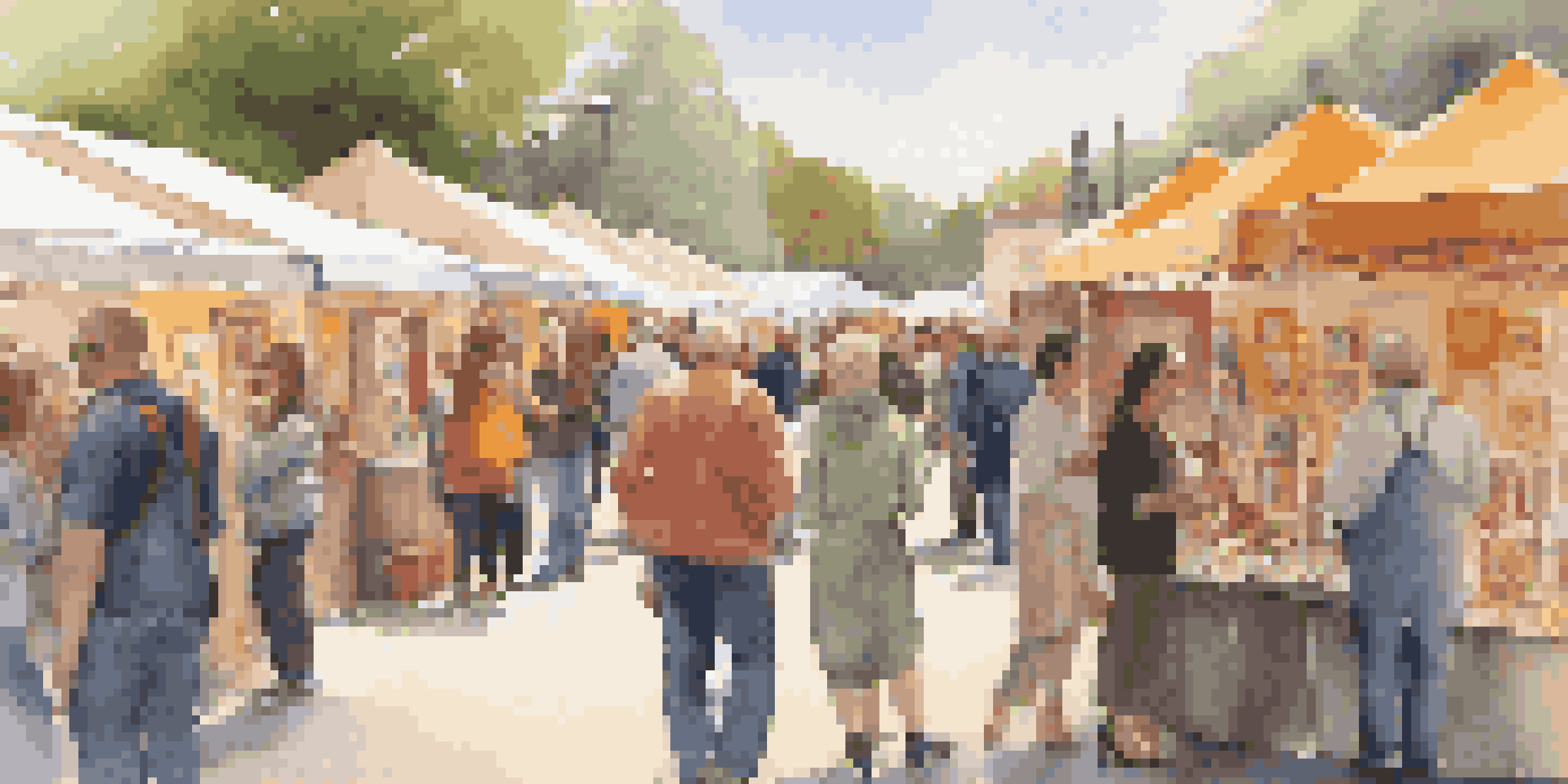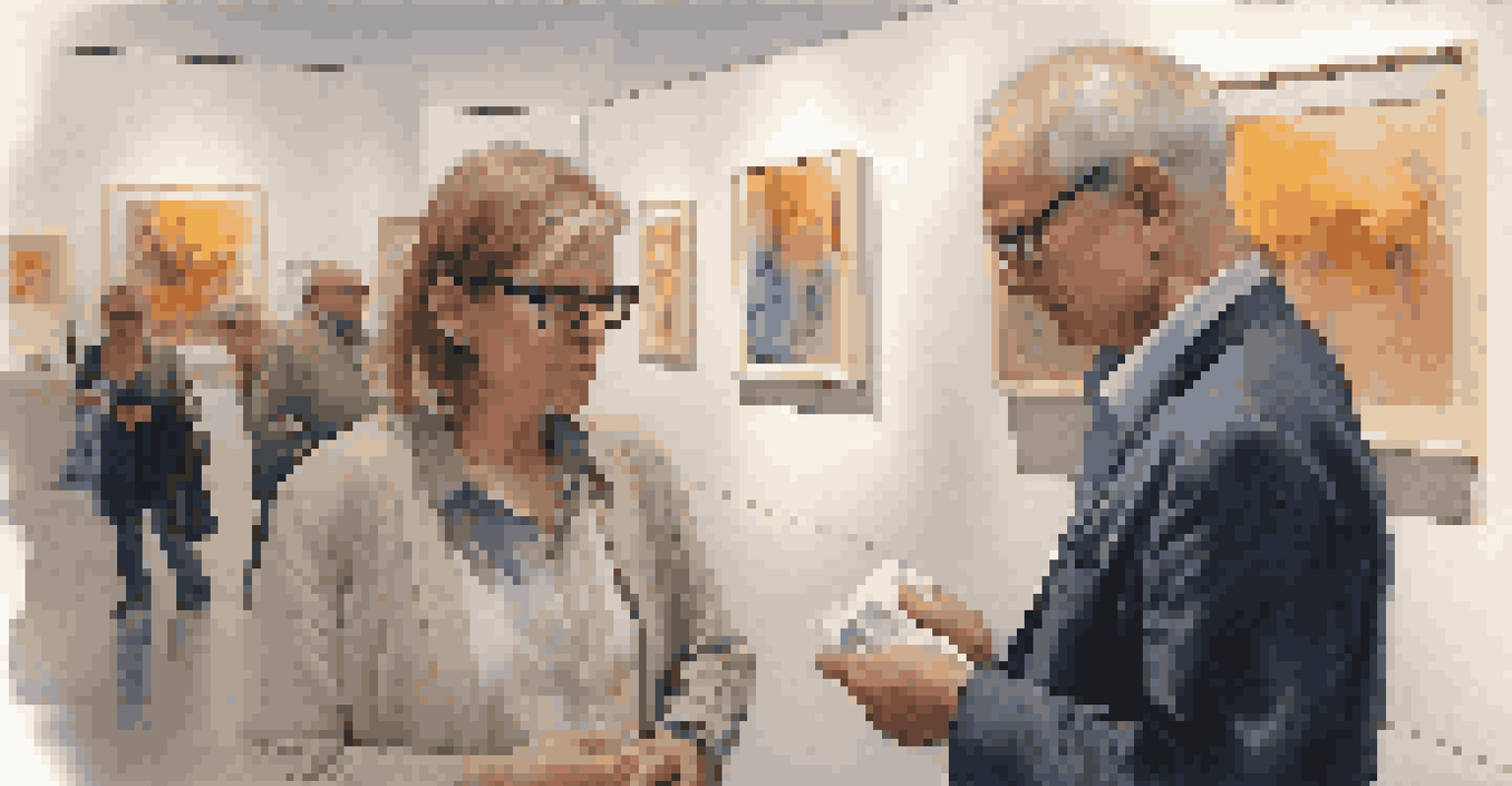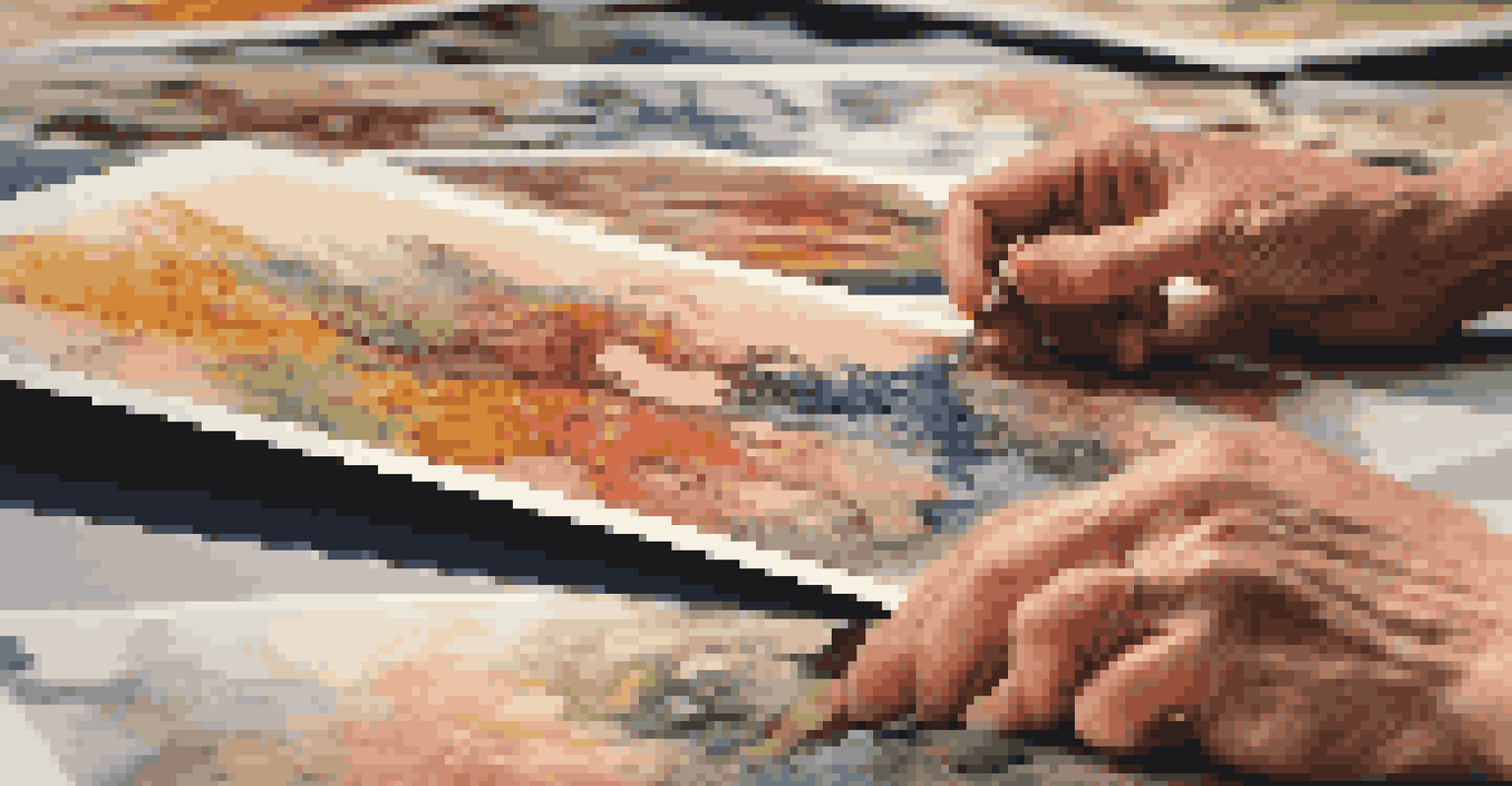Art Fairs as Networking Opportunities for Artists and Collectors

Understanding the Role of Art Fairs in the Art World
Art fairs play a pivotal role in connecting artists, collectors, and galleries. Unlike traditional exhibitions, these events create a bustling marketplace where creativity meets commerce. They offer a unique platform for emerging and established artists to showcase their work to a diverse audience.
Art is not what you see, but what you make others see.
For collectors, art fairs are treasure troves of discovery, enabling them to explore various styles and mediums all in one place. This concentrated environment fosters not only sales but also meaningful conversations about art and its significance. It’s where the passion for art truly shines.
Moreover, art fairs often feature curated sections or themes, providing context and narrative to the artworks presented. This enriched experience can spark connections that extend beyond the fair itself, leading to potential collaborations and friendships that last long after the event.
Networking: Building Relationships in a Vibrant Atmosphere
Networking at art fairs is akin to attending a lively dinner party where everyone shares a common interest. Artists can meet collectors directly, allowing for personal connections that are often more impactful than emails or phone calls. These face-to-face interactions can lead to future commissions or exhibitions.

Additionally, art fairs attract a mix of professionals, including curators, critics, and fellow artists. This diverse crowd creates a fertile ground for discussions that can inspire new ideas and collaborations. Sharing insights and experiences in this setting can significantly enhance an artist's career.
Art Fairs Connect Artists and Collectors
Art fairs serve as vibrant marketplaces where artists can showcase their work and collectors can discover new talent.
The energy of an art fair encourages spontaneity, making it easier for artists to introduce themselves and their work. A casual conversation over a piece of art can evolve into a significant opportunity, showcasing the organic nature of networking in the art community.
Creating Lasting Connections: Strategies for Artists
For artists attending an art fair, preparation is key to making the most of networking opportunities. Having a well-prepared elevator pitch about their work can help them engage potential collectors and collaborators effectively. This concise introduction should convey their artistic vision and what makes their work unique.
The best part of art is that it is a conversation starter.
Additionally, artists should consider bringing business cards or promotional materials that showcase their portfolio. This allows them to leave a lasting impression on those they meet, ensuring that their work stays top of mind long after the fair ends. A simple follow-up email can turn a brief conversation into a fruitful relationship.
Lastly, being genuinely curious and approachable can go a long way. Artists who take the time to ask questions and engage in discussions about others' work are more likely to forge meaningful connections. This reciprocal interest helps build a supportive network within the art community.
The Collector's Perspective: Finding New Artists
For collectors, art fairs present an invaluable opportunity to discover new artists and trends. The sheer variety of artworks available can help collectors expand their collection while also educating them about contemporary art movements. This hands-on experience is often more enriching than browsing online galleries.
Engaging with artists directly allows collectors to gain insights into the stories behind the works, enhancing their appreciation. These conversations can reveal the artist's inspirations and creative process, making the purchase feel more personal and significant. Knowing the artist's story can also add depth to the piece in the collector's home.
Networking Fuels Artistic Opportunities
Personal interactions at art fairs can lead to significant relationships that enhance artists' careers and collectors' insights.
Moreover, collectors can network with fellow art enthusiasts, sharing tips and recommendations. This camaraderie can lead to group purchases or joint investments, making art collecting a more collaborative and enjoyable endeavor. Building a network of trusted collectors can also provide valuable insights into market trends and emerging talents.
Curators and Critics: Their Role in Networking at Fairs
Curators and critics play a critical role in the art ecosystem, and art fairs provide them with a unique opportunity to scout talent. Their presence can elevate an artist's visibility, leading to future exhibition opportunities. Engaging with these professionals can be a game-changer for an artist’s career.
For collectors, establishing relationships with curators can provide insider knowledge about upcoming trends and noteworthy artists. Curators often have a keen eye for talent and can recommend pieces that may appreciate in value over time. This can help collectors make informed decisions and enhance their collections.
Moreover, discussions with critics can offer artists valuable feedback on their work. Constructive criticism can foster growth and refinement in an artist's practice. These interactions can create a supportive environment where artists feel encouraged to push boundaries.
Social Media: Extending Connections Beyond the Fair
In today's digital age, social media serves as a powerful tool for artists and collectors to extend their networks beyond the walls of an art fair. Posting about their experiences and tagging people they met can keep the conversation going. This not only reinforces connections but also increases visibility in the wider art community.
Artists can leverage platforms like Instagram to showcase their work and the connections they’ve made at fairs. Sharing behind-the-scenes moments or insights can create a narrative that attracts followers and potential buyers. This ongoing engagement helps maintain interest in their art long after the fair is over.
Social Media Extends Art Fair Impact
Using social media, artists and collectors can maintain relationships formed at fairs and expand their networks beyond the event.
For collectors, sharing their acquisitions and experiences can also spark conversations with other enthusiasts. Highlighting new pieces in their collection can lead to discussions about the artists and their practices, further enriching their knowledge and network within the art world.
Conclusion: The Lasting Impact of Art Fair Networking
Art fairs are more than just events; they are dynamic networking ecosystems that can transform the careers of artists and collectors alike. The relationships built in these vibrant settings can lead to collaborations, sales, and lifelong friendships. Whether you’re an artist seeking exposure or a collector on the hunt for new talent, these fairs offer unparalleled opportunities.
The connections made at art fairs can resonate throughout an artist’s career, influencing their trajectory and visibility in the market. For collectors, these events provide a chance to enrich their collections and deepen their understanding of contemporary art. This symbiotic relationship elevates the art community as a whole.

Ultimately, the key to successful networking at art fairs lies in being open, curious, and proactive. By embracing the spirit of connection, both artists and collectors can unlock new opportunities and foster a thriving, supportive art ecosystem.